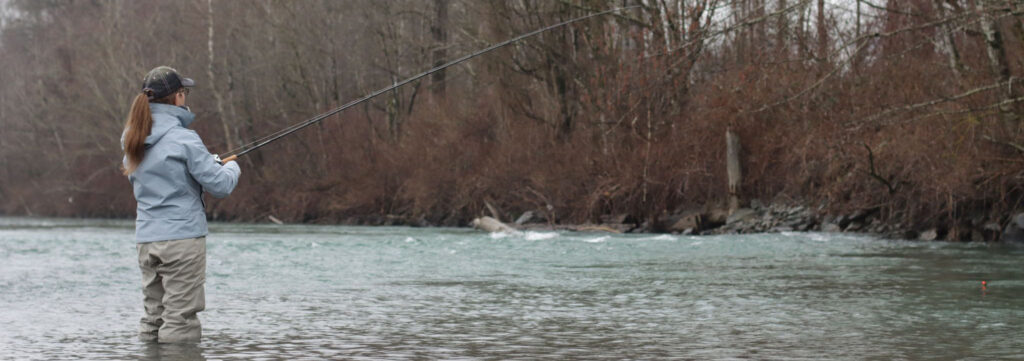The Vedder River (or Chilliwack River above Vedder Crossing) has over 30 kilometres of fishable water, from the upper boundary – located 100 metres below its confluence with Slesse Creek – to where it flows into the Fraser River downstream of Highway 1. A productive hatchery program offers anglers a chance to harvest hatchery-produced winter steelhead. Virtually all the fishing along the river is accessible via many trails and roadside pullouts.
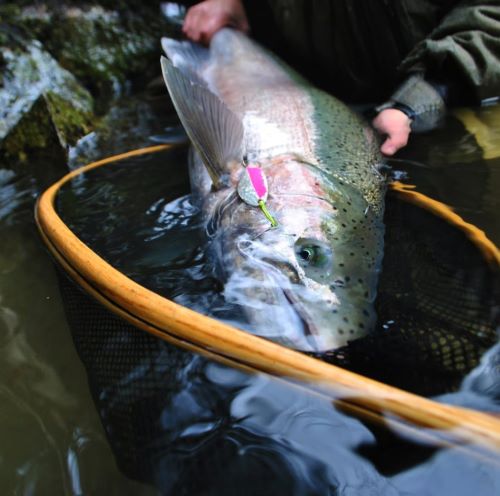
Timing
Winter steelhead fishing begins in December, shortly after the end of the fall salmon runs. It is a natural “next step” for river anglers who have cut their teeth on the salmon fishery. But the steelhead fishery has a very different look and feel. You typically encounter fewer anglers, and there is a sense of peacefulness that comes with walking and wading the often snow-dusted riverbanks nestled between the spectacular snow-capped mountains of the Chilliwack River Valley.
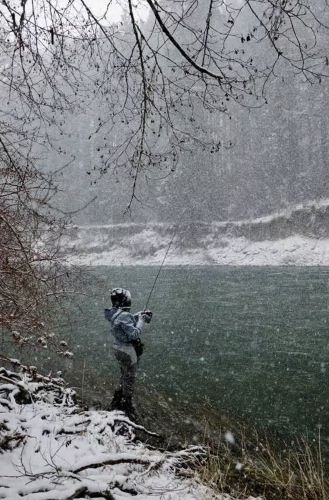
You can fish for steelhead on the Chilliwack/Vedder well into spring. In April, additional area closures and restrictions kick in, before becoming limited to fly-fishing only in the lower reaches in May, and closing completely to fishing for the month of June.
Float-fishing for steelhead
Float-fishing is the most popular method for steelhead on the Chilliwack/Vedder. The set-up is similar to what you see during the autumn salmon fishery. Use a single-action centrepin or a levelwind reel loaded with 12- to 15-pound-test monofilament mainline, matched with a three- to 3.75-metre (10- to 12-foot) rod. A 20- to 30-gram drift float balanced with sliding weights, and a short 45- to 60-centimetre (18- to 24-inch) eight- to 12-pound-test fluorocarbon leader will help keep your lures down in the strike zone. Common lures for steelhead include artificial baits like 10- to 15-centimetre (four- to six-inch) plastic worms or single plastic trout beads, as well as natural baits like cured salmon roe or prawns.
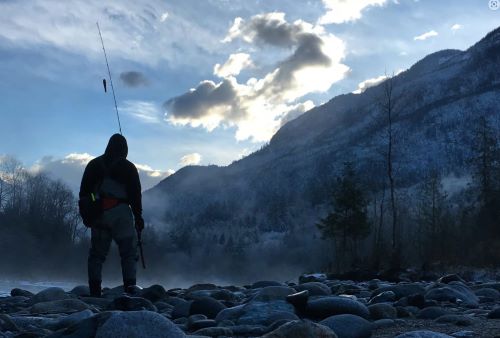
Angling etiquette
Since many steelhead anglers will start fishing at the top of a run, and slowly work their way downstream, it is generally considered poor etiquette to start fishing immediately downstream of another angler. Either find a run you can have to yourself, or start upstream, giving plenty of space to other anglers. When in doubt, it never hurts to ask other anglers if they wouldn’t mind you joining them.
Walk and wade
Because winter steelhead are in relatively low abundance compared to the various salmon species encountered during the fall fishery, covering water by walking and wading is an effective strategy for locating them. Starting at the head of a run, fish from the inside current seam, and slowly work your way outwards as well as downstream towards the tail out. As there may only be one steelhead in the run you are fishing, your goal is to ensure your offering gets in front of that fish. Sooner or later your efforts will be rewarded with some dancing chrome at the end of your line.
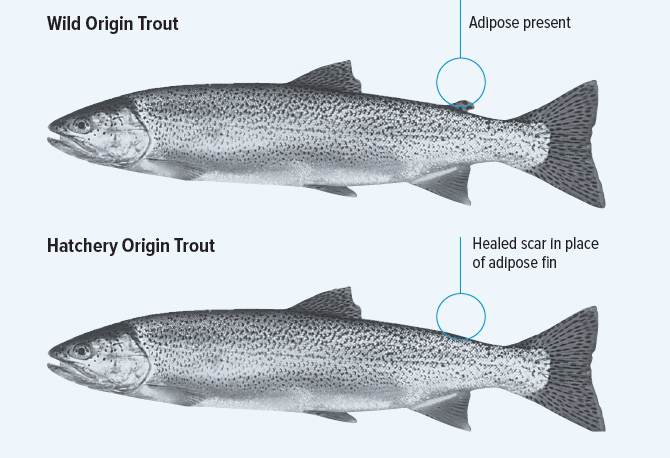
Steelhead angling regulations
It’s worth noting that in 2021, the daily quota regulations for the Chilliwack/Vedder River changed from one hatchery steelhead to the default regional regulation of two hatchery steelhead per day. Any wild steelhead (identified by the presence of an adipose fin) should be kept in the water at all times, and then carefully released. In addition to your basic licence, a Steelhead Conservation Surcharge Stamp is required when fishing for steelhead. Each harvested hatchery steelhead must be recorded on the back of your licence. When you have caught and retained your daily quota of hatchery steelhead, you must stop fishing that water for the remainder of the day. Be sure to check for the most up-to-date regulations before heading out fishing.
Tight lines!
Author: Mike Gass, Freshwater Fisheries Society of BC Staff
Photo Credit: Dan Krenz, Cole Rogozinski, Rodney Hsu, Dan Krenz
